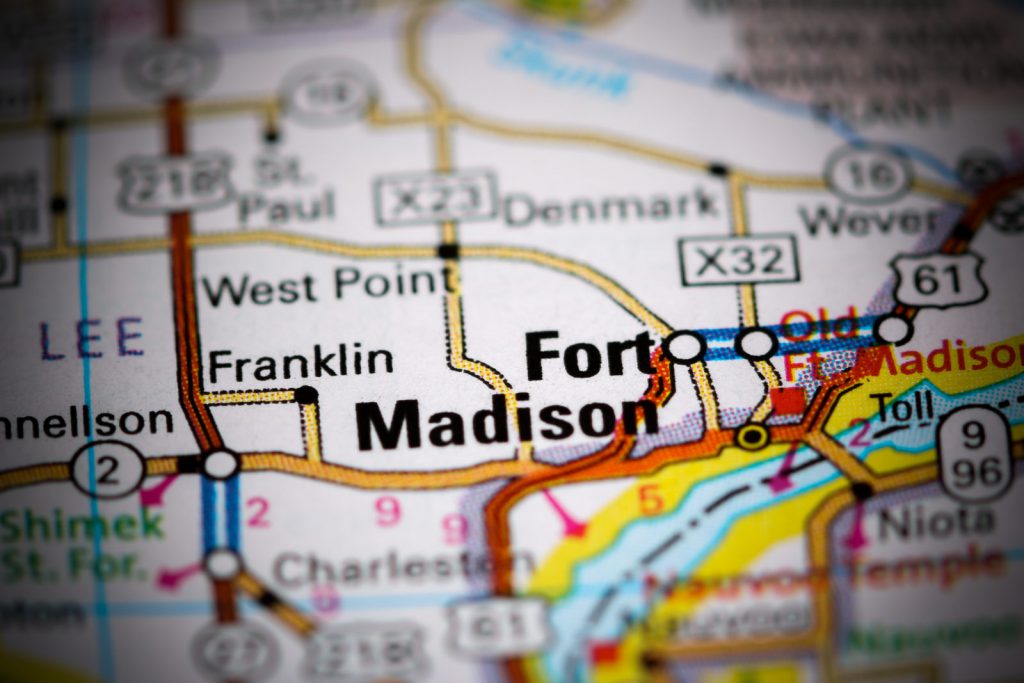
Published August 21, 2018
If you want to understand Donald Trump, you need to understand pens.
The modern luxury pen market was created by an Iowa entrepreneur, Walter Sheaffer, in 1913. His invention, a lever-filling fountain pen that easily could be filled from an ink container, made the rich and wannabe rich swoon with delight. Sales grew, new product lines were launched, and Walter Sheaffer’s small home town of Fort Madison became the world manufacturing capital for fine writing implements.
Fort Madison grew in tandem with the businessman’s eponymous company. When Sheaffer founded the company, the city was in decline, having lost population in the 1910 census. Buoyed by the company’s manufacturing plant, this small town on the Mississippi River grew quickly over the next 50 years. By 1960, over 15,000 people lived there, nearly double the number that called the town home before Sheaffer’s invention. Fort Madison’s growth depended on the company: the plant alone employed about 1,000 workers at its height.
But Sheaffer Pen’s future followed the by-now familiar pattern: lose market share to cheaper competition, consolidate, and fail. The Sheaffer family itself sold the company in 1967 to a conglomerate under whose oversight the company stagnated. That company then sold Sheaffer to a Swiss merchant banking company, Gefinor, in 1987. But despite investment, the company still foundered.
The final nails in the coffin were hammered into place in 1997. Bic, the famous French pen company, purchased the once-legendary firm for a mere $50 million. It immediately started to shift production overseas, sending manufacturing to China and other divisions to Slovakia. The Fort Madison plant started to wind down, finally closing for good in 2008.
Even a short burst of civic pride now has been cast aside due to modern sensibilities. Fort Madison opened a Sheaffer pen museum in 2011, seeking at least to retain a memory of when its residents proudly produced something sought out around the globe. But when Bic sold the company again, the new owners eliminated funding for the museum. The museum closed its doors for good in May, leaving Fort Madison with another empty building and the fading memories of its past glory.
Fort Madison’s fortunes have declined during this period. The town’s population declined markedly since 1960, dropping in each decade thereafter. Only 10,597 people now call it home, nearly 30 percent fewer than in 1960. Those staying behind also don’t earn very much money. Median income in Fort Madison’s Lee County was a mere $40,267 in 2012. Nearly a third of all households brought home less than $25,000 that year.
Lee County’s demographics, like other places in the Midwest, also hearken back to America’s past. The Census Bureau says 90.7 percent of the county’s population is non-Hispanic white. Only 14 percent have four-year college degrees or more. This small, unknown county in Iowa’s southeastern corner is a white, blue-collar bastion.
Given these trends, it should be no surprise that Donald Trump carried Lee County in a landslide. Like many other places in the Midwest that had seen better times, Trump dramatically improved upon Mitt Romney’s showing in 2012. Romney lost Lee County by a whopping 15.5 percent, but Trump won it by an even larger 16 percent—a massive 31.5 percent swing on the margin. Multiply this over and over again throughout the old Rust Belt and the story of Lee County is why Trump won.
But even this doesn’t tell the immensity of Trump’s victory. A Republican presidential nominee had not carried this county since 1980: the decline of Sheaffer Pen meant that even the Reagan-era boom did not lift Fort Madison’s boats. Republican voting dropped through the floor after Reagan’s departure from the scene: between 1988 and 2012, the GOP nominee never received as much as 42 percent. Trump’s 54.5 percent was the highest share for a Republican since Richard Nixon got 55 percent in his historic 1972 landslide. His 16 percent margin was the largest for a Republican nominee since at least the Eisenhower Era.
The Left could well respond to these numbers with their tired refrain, “they’re just racists who don’t like immigration.” But Lee County has never been known for this tendency. George Wallace’s race-baiting candidacy in 1968 received a mere 5.8 percent in a time where overt racism was a norm throughout much of America. It decisively rejected Barry Goldwater, giving him only 34 percent, when his opposition to the 1964 Civil Rights Act was an important campaign issue. And, of course, you have President Obama’s two landslide wins in the county to address.
Economics and civic decline are more likely to have motivated Lee County residents to throw off 60 years of voting patterns and embrace Trump. The decades-long decline continued going into 2016, with the county losing jobs as the nation’s job markets picked up steam. And the opioid crisis, which had long bypassed this part of the country, flooded into the area after 2011. Data from Senator Mike Lee’s office shows that Lee County experienced a surge in overdose deaths from zero to nearly six per year between 2011 and 2015.
Progressives who think they easily can win back these voters need to ask themselves why they didn’t win them in 2016. Not during the general election, when Clinton was a walking billboard for the status quo, but in the primary when Bernie Sanders also spoke of dashed dreams and an America reborn. Essentially, Trump and Sanders competed in their own private primary battle as in state after state voters could choose to cast ballots in whatever party primary they wanted. Trump won that battle hands down, smashing prior Republican turnout records as his message brought millions of new people into the GOP primary process. That certainly was the case in Lee County, which Trump carried in the Iowa caucus with 31 percent on a turnout over double the average for the preceding four contests.
No one expects that Trump will make Sheaffer Pens great again. His supporters, though, do hope that his values and his policies will bring back an ethic of Americans investing in America, of simple patriotism as the norm and not the exception, and of moving away from treating people as rounding errors on a corporate balance sheet.
“Make America Great Again” isn’t just a slogan for Lee County voters: it’s their fondest hope and their deepest dream. Understand that, understand how the rise and fall of Sheaffer Pens feeds into that desire, and finally you can understand Trump.
Henry Olsen is a senior fellow at the Ethics and Public Policy Center, a think tank in Washington D.C. He is also an editor at UnHerd.com where he writes about populism and politics around the world. He is the co-author, with Dante Scala, of The Four Faces of the Republican Party (Palgrave, 2015) and is the author of The Working Class Republican: Ronald Reagan and the Return of Blue-Collar Conservatism (HarperCollins, 2017).








